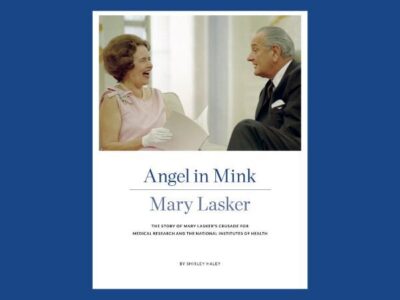Leukemia was mostly a fatal disease when Hagop Kantarjian, a medical student at the American University of Lebanon in Beirut, first came to MD Anderson in 1978.
Jed Manocherian wants your attention—but not for himself.
Soon after real estate developer and investor Jed Manocherian started a non-profit that lobbies for biomedical research, he heard about the outsized role Mary Lasker played in shaping government-funded biomedical research in the U.S.
Mary Lasker left a collection of detailed oral histories and a massive archive of documents, kept at Columbia University: 795 boxes and 7 flat boxes, which amount to 353 linear feet.
Mark Haynes Smith died Nov. 3, 2022. He was my partner and husband for just shy of 39 years. He was only 63.
Selwyn M. Vickers wants Memorial Sloan Kettering Cancer Center to become better known in Harlem, Coney Island, and other parts of New York City where the elite institution he now leads is not a go-to place.
Throughout Jim Allison’s early career, the field of oncology appeared to be unfazed by his T cell research. Allison’s introduction to the now-famed immune cell came in an undergraduate immunology course, where even the professor was apprehensive about Allison’s fascination with the recently discovered T cells. “I remember going to see the professor after class […]
When Kay Dickersin was diagnosed with breast cancer in 1986, the support group available to her in Baltimore focused largely on how to get the makeup and wig to look right.
The Cancer History Project preserves legacies, stories, and transcripts.
Shortly after Craig Jordan finished his PhD in the 1970s, he was invited by Michael Harper to work at the Worcester Foundation, the “home of the oral contraceptive.”















